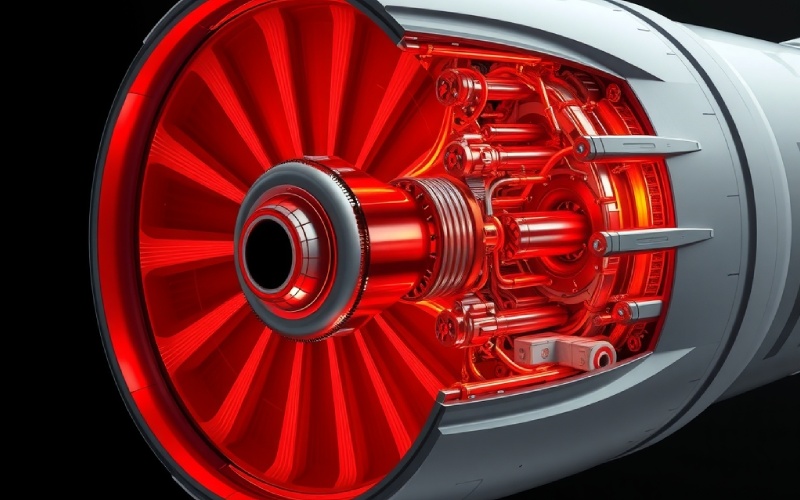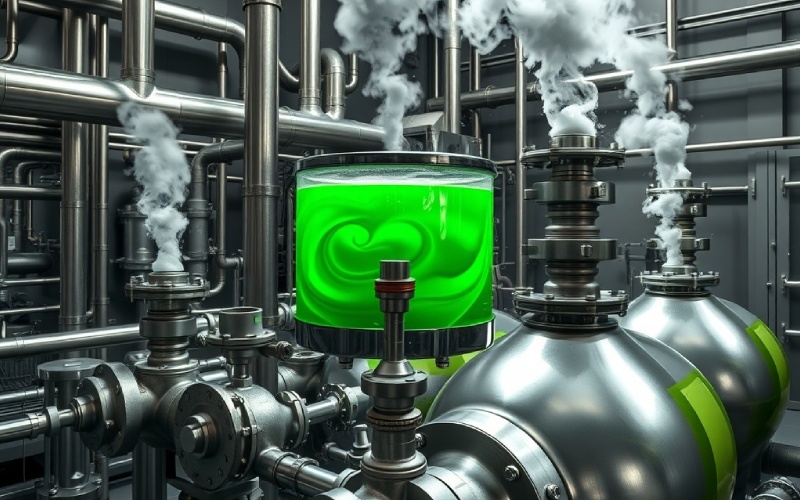Tecrübemiz ve bilgi birikimimizle Istar'ın projenize başlamanıza yardımcı olmasına izin verin!
Tasarım dosyalarınızı ve üretim gereksinimlerinizi yükleyin ve 30 dakika içinde size geri dönelim!

A nickel alloy is a special blend where nickel is the cornerstone, blended with other elements to create products with amazing homes. If you remain in an area that deals with difficult conditions– think high warmth, destructive chemicals, or intense stress– then you need to know about nickel alloys. In this post, I’m going to stroll you with whatever you need to know about this extraordinary alloy and the one-of-a-kind properties of nickel that make it so important. We will explore what makes a nickel alloy so solid and why it’s the go-to option for so many requiring jobs. This alloy is a testimony to how we can combine elements to produce products that are much more qualified than their individual components.
Let’s begin with the fundamentals. A nickel alloy is a type of metal made by integrating pure nickel with several other components. Think about it like a dish. You begin with your cornerstone, nickel, and then you add various other ingredients, called alloying aspects, to obtain the final product you desire. The goal of creating a nickel alloy is to improve the all-natural properties of nickel or to produce a completely new set of features. This makes the resulting alloy a lot more valuable for particular, and often very demanding, applications. A nickel alloy isn’t simply a basic mix; it’s a carefully crafted material created for performance.
The procedure of developing an alloy entails melting the steels with each other and after that allowing them cool. The way they are mixed and cooled down impacts the last homes of the metal. What’s impressive about a nickel alloy is its versatility. By changing the “dish”– the kinds and quantities of alloying elements– we can develop a huge variety of materials. Each nickel alloy has its own distinct set of staminas. This ability to tailor the alloy makes nickel a cornerstone in contemporary engineering, particularly in high-performance applications where regular steels simply can not hold up. The production of each certain alloy is a science by itself, tailored to combat particular obstacles.
The actual magic of a nickel alloy originates from the alloying components that are added to it. Each aspect brings something new to the table, transforming the nickel right into a high-performance material. As an example, adding chromium to the alloy dramatically boosts its resistance to oxidation, which is a kind of rust that takes place at heats. This is why you’ll usually locate nickel-chromium alloys in heating elements and heating systems. Molybdenum is an additional crucial alloying aspect. It significantly increases the alloy’s resistance to lots of acids and other destructive chemicals, making it perfect for chemical processing plants.
Other elements play crucial duties also. Copper can be contributed to a nickel alloy to boost its resistance to salt water and various other salts, which is why nickel-copper alloys are common in marine applications. Iron is often included to develop a nickel-iron-chromium alloy that has fantastic toughness at heats. A few of the most advanced nickel alloys, known as nickel-based superalloys, contain components like titanium and light weight aluminum. These enhancements assist the alloy maintain its stamina and shape also at unbelievably heats, a residential or commercial property called creep resistance. The cautious selection of each alloying aspect is what allows us to produce a specialized nickel alloy for practically any type of tough job. Enhancing their residential or commercial properties is the key to their variety of uses.

When we discuss the physical residential or commercial properties of a nickel alloy, we’re discussing its fundamental characteristics that make it so useful. Among one of the most important is its exceptional corrosion resistance. Nickel and nickel alloys naturally develop a protective oxide layer on their surface area that guards them from assault by chemicals and wetness. This makes them very resistant to corrosion and various other forms of deterioration, even in rough corrosive atmospheres. This is a fundamental reason that this kind of alloy is so widely utilized.
An additional vital attribute is their ability to endure heats. Numerous metals lose their toughness and start to soften or warp when they fume, but a high-performance nickel alloy can keep its mechanical properties at elevated temperature levels. This is vital for applications like jet engines and nuclear power plant. Moreover, numerous nickel alloys have a low thermal expansion, indicating they do not expand or acquire much when the temperature level changes. This stability is vital for precision tools and devices that need to maintain their shape. The one-of-a-kind residential or commercial properties of these alloys, including their toughness and solidity, make them vital in modern innovation. The alloy’s composition is straight in charge of these outstanding properties.
You could have heard the term “superalloy,” and it’s not simply an elegant name. Nickel-based superalloys are an unique course of nickel alloys that exhibit amazing toughness and resistance at extremely heats. They can run in settings approaching their melting factor, which is something most other metals merely can not do. This amazing high-temperature stamina is what gains them the “incredibly” title. This capacity to withstand high temperatures is crucial for their applications.
What makes a nickel-based superalloy so solid is its internal structure. These alloys are typically strengthened by a procedure called rainfall solidifying, which entails thoroughly regulated home heating and cooling cycles. This creates small, hard fragments within the metal’s structure that imitate a microscopic skeletal system, stopping the alloy from flawing under anxiety and high temperature. You’ll find these impressive materials in one of the most demanding locations, such as the generator blades of a gas turbine in a jet engine or in power plants, where they need to endure severe warmth and rotational forces. The remarkable residential or commercial properties of these steels and alloys make them important for high-performance applications.
Nickel-chromium alloys are just one of the most usual and helpful kinds of nickel alloy. The key factor for their popularity is their impressive resistance to both corrosion and oxidation at heats. The enhancement of chromium to the nickel alloy develops a very stable and protective surface area layer that prevents oxygen from getting to the metal underneath, also when it’s heated. This makes them extremely immune to scaling and destruction at elevated temperature levels.
You engage with a nickel-chromium alloy more often than you might think. The burner in toasters, electrical cooktops, and room heaters are often made from a popular nickel alloy called Nichrome, which is a sort of nickel-chromium alloy. These alloys have high electrical resistance, which enables them to heat up quickly and successfully. Along with heating elements, these alloys are likewise made use of in heater components and various other high-temperature tools. Their mix of warm resistance, corrosion resistance, and toughness makes this alloy a trustworthy choice for applications that need to hold up against high warm for long periods. These alloys provide superb efficiency in such demanding problems.
When you need a material that can withstand the violence of deep sea and other destructive liquids, a nickel-copper alloy is typically the solution. This type of alloy is highly immune to deterioration from seawater, brine, and a variety of acids and alkaline options. A popular instance of a nickel-copper alloy is Monel, often referred to as alloy 400. This certain alloy has been a staple in aquatic design for over a century.
The combination of nickel and copper in this alloy produces a metal that is both strong and unbelievably resilient in aquatic settings. It’s made use of to make points like propeller shafts, pumps, valves, and piping systems on ships and overseas oil rigs. The nickel-copper alloy does not simply resist general deterioration; it’s likewise resistant to matching and crevice deterioration, which are local kinds of attack that can be extremely damaging. Its capability to preserve its integrity in these corrosive atmospheres makes this alloy a vital product for the oil and gas and aquatic sectors. This alloy with excellent high-temperature toughness and corrosion resistance is a workhorse.
Definitely. The capability to do dependably at high temperature is among the specifying attributes of a nickel alloy. While we have actually discussed this with superalloys and nickel-chromium alloys, it’s a residential property that extends throughout a variety of nickel alloys. From heating system parts to warmth exchangers in chemical plants, these alloys are selected because they don’t shed their stamina when the warmth is on. This is a stark comparison to materials like stainless steel, which can compromise dramatically at very high temperatures.
The factor a nickel alloy can manage such extreme heat lies in its atomic framework. The solid bonds between the nickel atoms and the alloying components resist the enhanced resonances that occur at heats, a phenomenon that can bring about a product losing its shape, a procedure called creep. High-performance alloys like Inconel, a family of nickel-chromium-based superalloys, are specifically developed for these high-temperature atmospheres. The phenomenal corrosion resistance of these alloys at high temperature likewise protects against oxidation, which would or else compromise the metal. The mix of high strength and resistance to corrosion and oxidation makes a nickel alloy the top choice for any kind of application involving elevated temperature level.
Right here’s a table revealing some common high-temperature nickel alloys and their regular usages:
| Nickel Alloy | Trick Alloying Elements | Tipik Uygulamalar |
|---|---|---|
| Inconel 625 | Chromium, Molybdenum, Niobium | Aerospace components, chemical processing tools |
| Inconel 718 | Chromium, Iron, Niobium, Molybdenum | Gas generator components, rocket motors |
| Alloy 800 | Iron, Chromium | Heating system tubes, heat exchangers |
| Hastelloy X | Chromium, Iron, Molybdenum | Furnace parts, jet engine tailpipes |
The world of nickel alloys is vast, with many different kinds developed for particular purposes. We can organize them based on their main alloying components. For instance, we have the nickel-chromium alloys we went over, which are fantastic for high-temperature applications. Then there are the nickel-copper alloys, which master aquatic atmospheres. An additional vital group is the nickel-molybdenum alloys, which provide superb resistance to non-oxidizing acids.
We additionally have more intricate alloys like the nickel-chromium-iron alloys, which balance cost and efficiency for a variety of high-temperature usages. The corrosion-resistant alloys often contain significant quantities of molybdenum and chromium, such as the Hastelloy family (a well-known nickel-molybdenum-chromium alloy), which can deal with some of one of the most hostile chemical environments. There are likewise nickel-iron alloys with controlled reduced thermal development, and also a form memory alloy made from nickel and titanium. This wide variety of nickel alloys indicates that for almost any type of design difficulty, there’s likely a nickel-based alloy that’s best for the job.
Below is a listing of some usual kinds of nickel alloys:

Nickel-chromium-iron alloys stand for a functional and widely used group of products. An excellent instance is Alloy 800. These alloys are essentially a bridge between stainless steels and the higher-performance, high-nickel alloys. They include a significant quantity of iron, that makes them much more cost-effective, however they still keep a lot of the outstanding high-temperature strength and corrosion resistance that nickel and chromium supply. This makes the ni-cr-fe alloys an extremely practical choice for numerous commercial applications.
You’ll find this sort of nickel alloy in position that call for good performance at elevated temperature levels but do not necessarily need the extreme capabilities of a superalloy. They are frequently used in commercial heaters, tools for heat dealing with steels, and in petrochemical processing, where they have to resist both heats and harsh compounds like sulfuric acid. Nuclear power plant likewise utilize these alloys for heavy steam generator tubing and various other components. The balance of properties in a nickel-iron-chromium alloy makes it a dependable and cost-efficient remedy for a wide range of demanding industrial environments.
Picking the best nickel-based alloy depends completely on the particular needs of your application. You require to consider several variables. Initially, what is the operating temperature level? If you’re managing an extremely high temperature, you’ll likely need to look at the nickel-based superalloys like Inconel. For modest high-temperature service, a nickel-chromium-iron alloy may be enough and much more affordable.
Second, what type of destructive environment will the alloy be in? For seawater, a nickel-copper alloy is a solid contender. For solid acids, you’ll intend to explore the nickel-molybdenum or nickel-chromium-molybdenum alloys like Hastelloy C-276 or Alloy 59. Various other aspects to consider include the called for mechanical properties, such as stamina and ductility, and whether the part needs to be bonded or created. Understanding the special residential properties of each nickel alloy is essential to making the right choice. Each alloy make-up is made to tackle a specific collection of difficulties, and picking the appropriate one is crucial for the success and long life of your job.